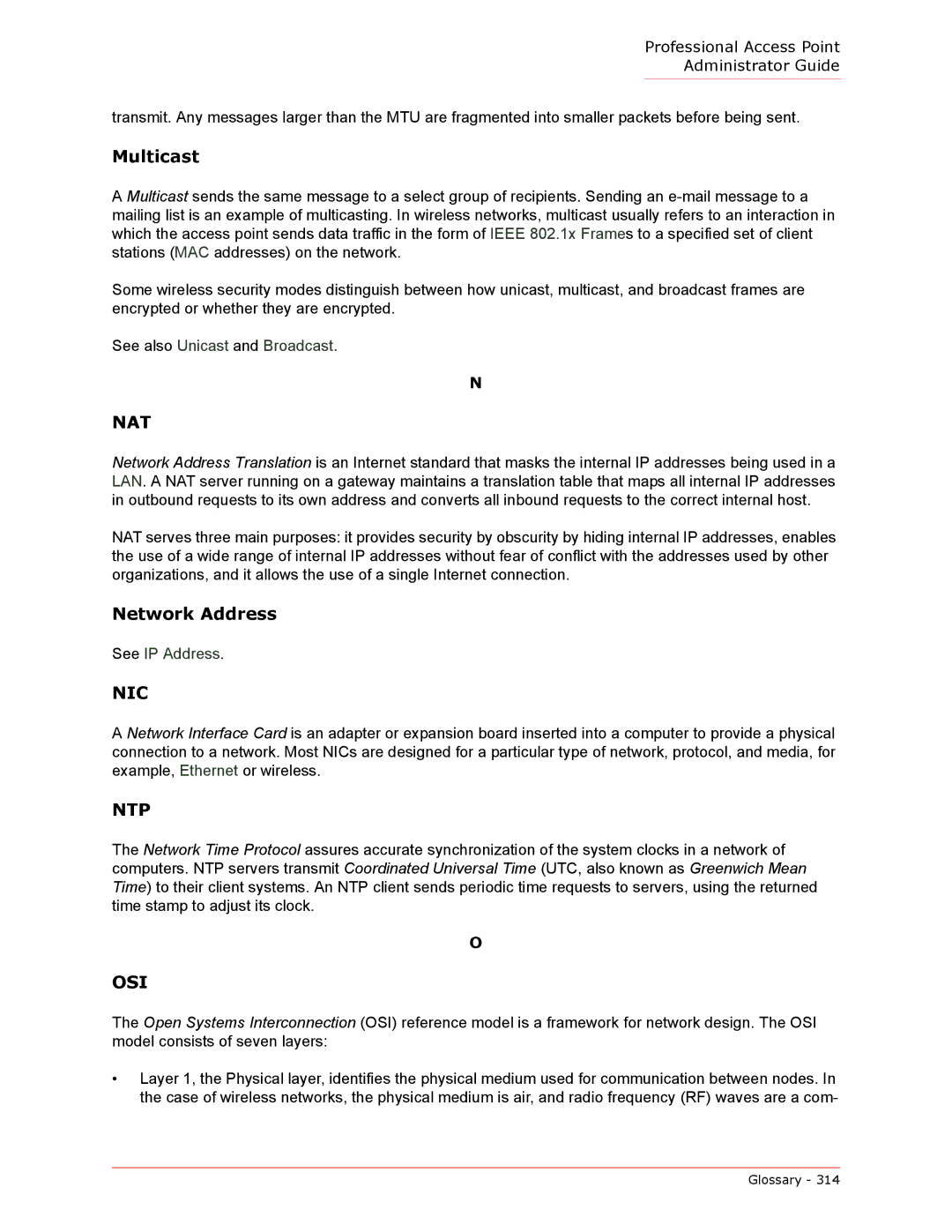
Professional Access Point
Administrator Guide
transmit. Any messages larger than the MTU are fragmented into smaller packets before being sent.
Multicast
A Multicast sends the same message to a select group of recipients. Sending an
Some wireless security modes distinguish between how unicast, multicast, and broadcast frames are encrypted or whether they are encrypted.
See also Unicast and Broadcast.
N
NAT
Network Address Translation is an Internet standard that masks the internal IP addresses being used in a LAN. A NAT server running on a gateway maintains a translation table that maps all internal IP addresses in outbound requests to its own address and converts all inbound requests to the correct internal host.
NAT serves three main purposes: it provides security by obscurity by hiding internal IP addresses, enables the use of a wide range of internal IP addresses without fear of conflict with the addresses used by other organizations, and it allows the use of a single Internet connection.
Network Address
See IP Address.
NIC
A Network Interface Card is an adapter or expansion board inserted into a computer to provide a physical connection to a network. Most NICs are designed for a particular type of network, protocol, and media, for example, Ethernet or wireless.
NTP
The Network Time Protocol assures accurate synchronization of the system clocks in a network of computers. NTP servers transmit Coordinated Universal Time (UTC, also known as Greenwich Mean Time) to their client systems. An NTP client sends periodic time requests to servers, using the returned time stamp to adjust its clock.
O
OSI
The Open Systems Interconnection (OSI) reference model is a framework for network design. The OSI model consists of seven layers:
•Layer 1, the Physical layer, identifies the physical medium used for communication between nodes. In the case of wireless networks, the physical medium is air, and radio frequency (RF) waves are a com-
Glossary - 314
